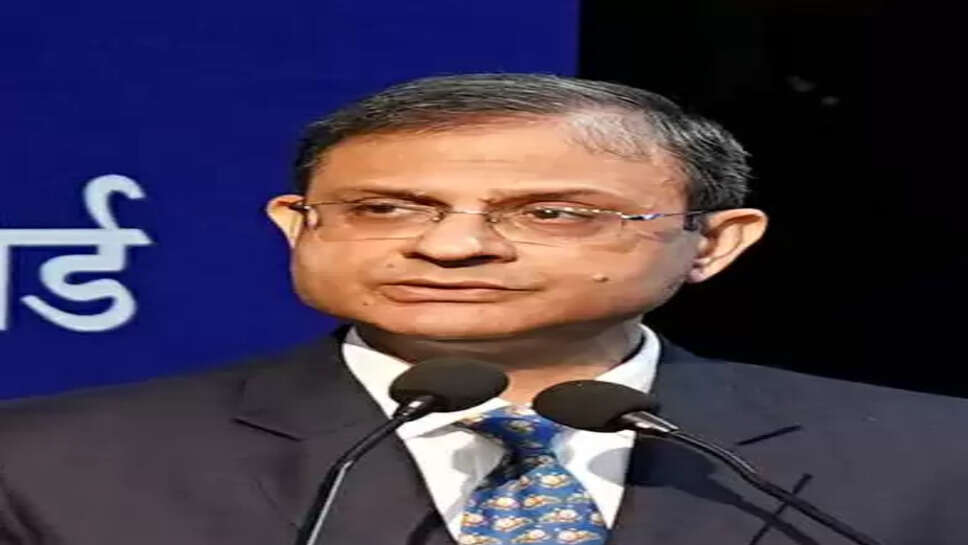No Rate Cut Yet: RBI Stands Pat, Lowers FY26 CPI Forecast

In a widely anticipated move, the Reserve Bank of India (RBI) on Wednesday decided to keep the benchmark repo rate unchanged at 5.5%, marking the seventh consecutive policy meeting without a change. The decision, taken at the conclusion of the bi-monthly Monetary Policy Committee (MPC) meeting, reflects a cautious but confident approach as inflation begins to show signs of sustained moderation.
In a significant development, the RBI also lowered its forecast for Consumer Price Index (CPI)-based inflation for FY26 to 3.1%, citing better food supply management, easing commodity prices, and a stable rupee outlook.
No Change in Policy Rate Amid Improved Inflation Outlook
The Monetary Policy Committee voted 5-1 in favour of maintaining the repo rate at 5.5%, a level it has held since early 2024. The central bank emphasized that the priority remains price stability, even as growth remains robust.
RBI Governor Shaktikanta Das stated during his address, “We have observed encouraging trends in inflation data, and the forecast for FY26 shows further decline. However, global uncertainties and domestic weather-related disruptions require us to tread cautiously.”
The reverse repo rate and marginal standing facility (MSF) rates remain unchanged at 3.5% and 6% respectively.
CPI Inflation: From Worry to Relief
The most notable takeaway from the announcement was the downward revision of CPI inflation expectations. The RBI has now forecasted inflation at 3.1% for FY26, sharply lower than previous estimates of 3.7%. This revision comes on the back of:
-
Decelerating food inflation, particularly in pulses and vegetables
-
Stable global oil prices, which have hovered below $80 per barrel
-
Improved monsoon spread, which has helped boost agricultural output
-
Base effect, which contributes to a lower year-on-year comparison
In the short term, inflation for FY25 is expected to average around 4.3%, within the RBI’s comfort range of 2–6%.
Growth Momentum Intact
On the growth front, the RBI retained its GDP growth forecast for FY26 at 7%, signaling continued confidence in domestic consumption and investment patterns. The services sector, infrastructure activity, and manufacturing have remained resilient despite global headwinds.
Das noted, “India remains one of the fastest-growing major economies in the world. Credit growth is robust, corporate balance sheets are healthy, and investment appetite is returning.”
Why RBI Is Holding Rates
Several factors have influenced the central bank’s decision to keep the repo rate on hold despite falling inflation:
-
Geopolitical uncertainty – The global economic landscape remains volatile due to tensions in Eastern Europe, the Middle East, and disruptions in trade routes.
-
Uncertain monsoon impact – While initial rainfall has been favorable, late-season variability could affect food prices.
-
Global central bank stance – Major central banks like the US Federal Reserve and the European Central Bank are still maintaining a tight monetary policy.
-
Liquidity conditions – The RBI is cautiously monitoring liquidity infusion and interbank lending to avoid overheating.
The Governor emphasized that the stance of the policy remains “withdrawal of accommodation”, meaning that the central bank is still focused on absorbing excess liquidity gradually to anchor inflation expectations.
What It Means for Borrowers and Savers
The status quo on repo rate means that interest rates on home, auto, and personal loans are likely to remain unchanged. This may come as a relief to borrowers, especially as banks have already tightened lending norms in recent quarters.
However, depositors hoping for higher returns on fixed deposits or savings instruments may have to wait longer for further upward revisions.
For businesses, the continued pause in rate hikes is expected to support capital investment, especially in interest-sensitive sectors like real estate, construction, and automobiles.
Banking Sector Reaction
Leading public and private sector banks welcomed the RBI’s decision. Bankers said the predictability in monetary policy provides a clear signal for long-term planning.
SBI Chairman Dinesh Khara remarked, “The RBI’s emphasis on inflation control while enabling growth is well-calibrated. The reduction in inflation expectations should help improve consumer sentiment and consumption.”
Market experts, too, were optimistic. “Lower CPI estimates increase the chances of a rate cut sometime in early 2026, if global factors remain stable,” said Nilesh Shah, fund manager at a leading AMC.
Rupee and Market Response
Following the RBI’s announcement, the Indian Rupee saw marginal strengthening against the US dollar, buoyed by confidence in the inflation forecast. The equity markets also reacted positively, with banking and auto stocks gaining on expectations of stable lending conditions.
The bond markets cheered the lower inflation outlook, with 10-year bond yields softening slightly, indicating room for possible monetary easing in future quarters.
Global Context
India’s monetary policy path continues to diverge slightly from global peers. While the US Federal Reserve is still dealing with persistent inflation and high wage growth, the RBI seems to be in a sweet spot, managing both inflation and growth effectively.
Many emerging market economies are now watching India’s trajectory as a possible template for balancing post-pandemic recovery with monetary discipline.
Looking Ahead
The next RBI policy review is expected in October 2025. Until then, all eyes will remain on food inflation trends, crude oil prices, and global economic data. The central bank has kept the door open for future policy changes, but any rate cut seems unlikely before the start of FY26 unless inflation surprises further on the downside.
The RBI’s focus remains unwavering: anchoring inflation, managing liquidity, and supporting growth—a difficult balancing act, but one that, so far, India’s monetary policymakers are handling with precision.
By maintaining the repo rate at 5.5% and lowering the CPI forecast to 3.1% for FY26, the Reserve Bank of India has signaled growing confidence in its inflation control strategy while ensuring macroeconomic stability. The current stance offers relief for borrowers, room for growth in consumption, and a strong signal that India remains economically resilient amidst global uncertainties.
As inflation retreats and growth holds firm, India may be inching toward a new monetary phase—one of cautious optimism and strategic patience.
.jpg)